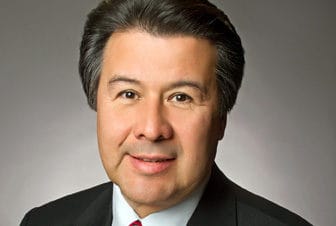COMMENTARY: I want to take a moment to clear up a few issues concerning New Mexico’s legislative retirement plan. Our retirement plan is unique because New Mexico is unique. We are a citizen legislature — the only one in the nation that does not pay members some kind of salary.

Courtesy photo
Pete Campos
New Mexico legislators spend days and weeks away from their families, loved ones and jobs during legislative sessions and during the interim. While we legislators do receive per diem and mileage reimbursement, this tends to barely cover gasoline, hotels and meals, and it does not account for wear and tear to vehicles or lost personal income.
The legislative retirement plan actually began in 1987 as part of the retirement system for all public employees. The plan was amended, and a separate funding stream for it was identified, in 2003. As of the end of 2017, 313 members had signed up for the plan, with just over half of those members already retired. The plan is administered by the Public Employees Retirement Association.
The plan calls for an annual contribution from members of $600. The formula for calculating the legislative retirement benefit is 11 percent of the per diem rate for legislators on Jan. 1 of the calendar year that the legislator retires, multiplied by 60 and further multiplied by the number of years served by the member.
In 2017, payment of state funds into the plan was reduced in order to help balance the state budget. Despite calls to do so, the state Constitution does not allow for money already in the pension fund to be transferred out to meet other state budget demands, including budget shortfalls and capital outlay.
The legislative retirement plan is currently funded at about 151 percent, meaning that money in the plan exceeds anticipated benefit payout by about half. However, it is worth noting that several legislators with decades of service have either retired or announced plans to do so.
Every election cycle produces at least a handful of members who opt to retire, and additional retirements by long-serving members could quickly put a strain on the fund and eventually create solvency issues if payment into the fund were to be suspended entirely.
This plan may appear to be over-funded. However, because younger members need to serve only 10 years to be eligible for benefits, over time they could put some strain on the fund.
Similarly, retirements of long-serving members, whose years of service are a multiplier for calculation of benefits, will also serve to draw the fund down. While I am open to making changes to the legislative retirement system, we must do so cautiously to avoid solvency issues further down the road.
I look forward to having a discussion about changes to the plan. I have had the honor of serving in the legislature for 28 years, and I am happy serving as a citizen legislator. However, I suspect that any honest discussion about the retirement system will also lead to a discussion about paying members a salary — which I believe is a mistake, if for no other reason than a salaried legislature will end up costing taxpayers more than our retirement system currently does.
In considering other changes to the system, I am also open to a discussion of increasing the amount members must pay into the plan. Another component of those discussions should be further limiting or suspending the amount the state pays into the fund.
However, I want to make my preference for use of those funds clear: If additional funding for the legislative retirement plan is diverted or intercepted, that money should first go toward retirement plans for other public employees such as firefighters and educators.
Pete Campos, a Democrat from Las Vegas, represents District 8 in the New Mexico Senate. Agree with his opinion? Disagree? NMPolitics.net welcomes your views. Learn about submitting your own commentary here.
